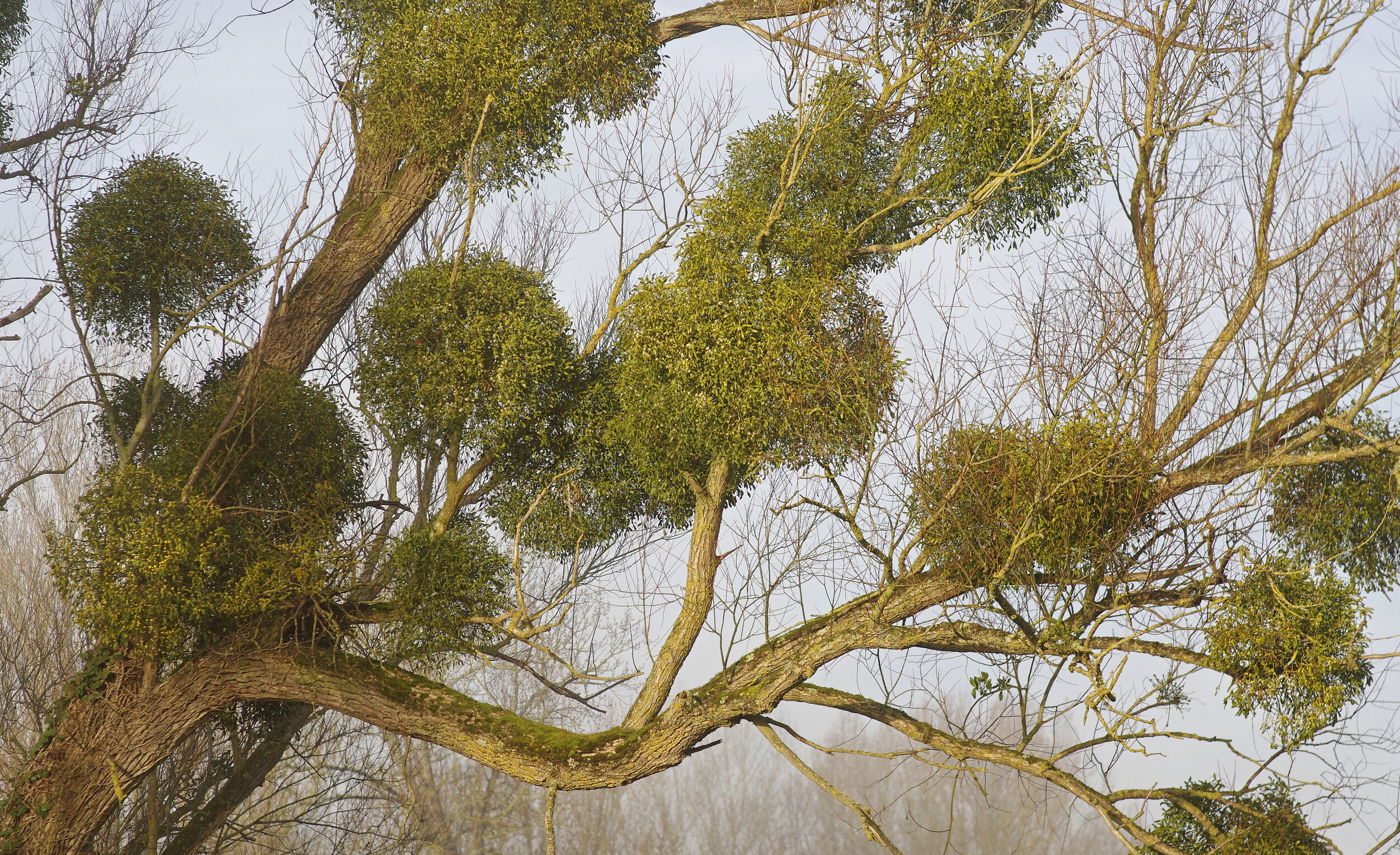While perusing a local indie market this weekend I noticed that there was a stand selling mistletoe branches. It was odd to note that, for as ubiquitous of a symbol it is during this time of year, so few people realize what these plants are all about.
A reference to mistletoe could be any number of plants in the order Santalales. It is a large and rather varied grouping but the common thread throughout Santalales is parasitism on some level. Many species grow in the form of a shrub that grows epiphytically and taps into a host tree. While most still undergo photosynthesis, they also obtain nutriment using specialized structures that plug into the vascular tissue of their host. If infestations are intense enough, mistletoe can kill a tree.
However, don't let this fact leave you with any animosity toward mistletoe. Far from being a drain on the ecosystem, evidence is showing that many mistletoe species are keystone organisms where they are native. They produce copious amounts of berries that attract and feed a wide variety of birds and their growth habit makes for great nesting sites as well. Their leaves and shoots are munched on by a multitude of insect life, which then attracts animals higher up the food chain. Because of the preponderance of bird species that frequent mistletoe, other berry producing plants in the area benefit as well. In one study, researchers found that junipers had higher rates of reproduction when growing near mistletoe. Because mistletoe attracts all of those berry eating birds, numbers of seed carriers significantly increase for all other berry producing plants.
The most commonly encountered species of mistletoe is probably Viscum album. This evergreen species ranges from north Africa to southern England all the way to parts of Asia. It is evergreen and seems to really like growing on apple trees (Malus sp.). My favorite thing about this species as well as many other mistletoe is how they manage to reproduce. As mentioned above, they produce plump berries that birds can't resist. The pulp of the berry is quite sticky and thick that when the bird digests what it can and voids the rest, it has to wipe itself on a branch. This causes the mistletoe seed to stick to the branch like glue. When the seed germinates it attaches itself to the tree, living independently at first but later tapping into the trees vascular tissue. Next time you pucker up with someone special under one of these plants, keep that in the back of your mind!
Photo Credit: Martin LaBar
Further Reading:
http://www.kew.org/plants-fungi/Viscum-album.htm
http://www.annualreviews.org/doi/abs/10.1146/annurev.ecolsys.32.081501.114024
http://onlinelibrary.wiley.com/doi/10.2307/4013039/abstract
Photo by Daniel Jolivet licensed under CC BY 2.0
